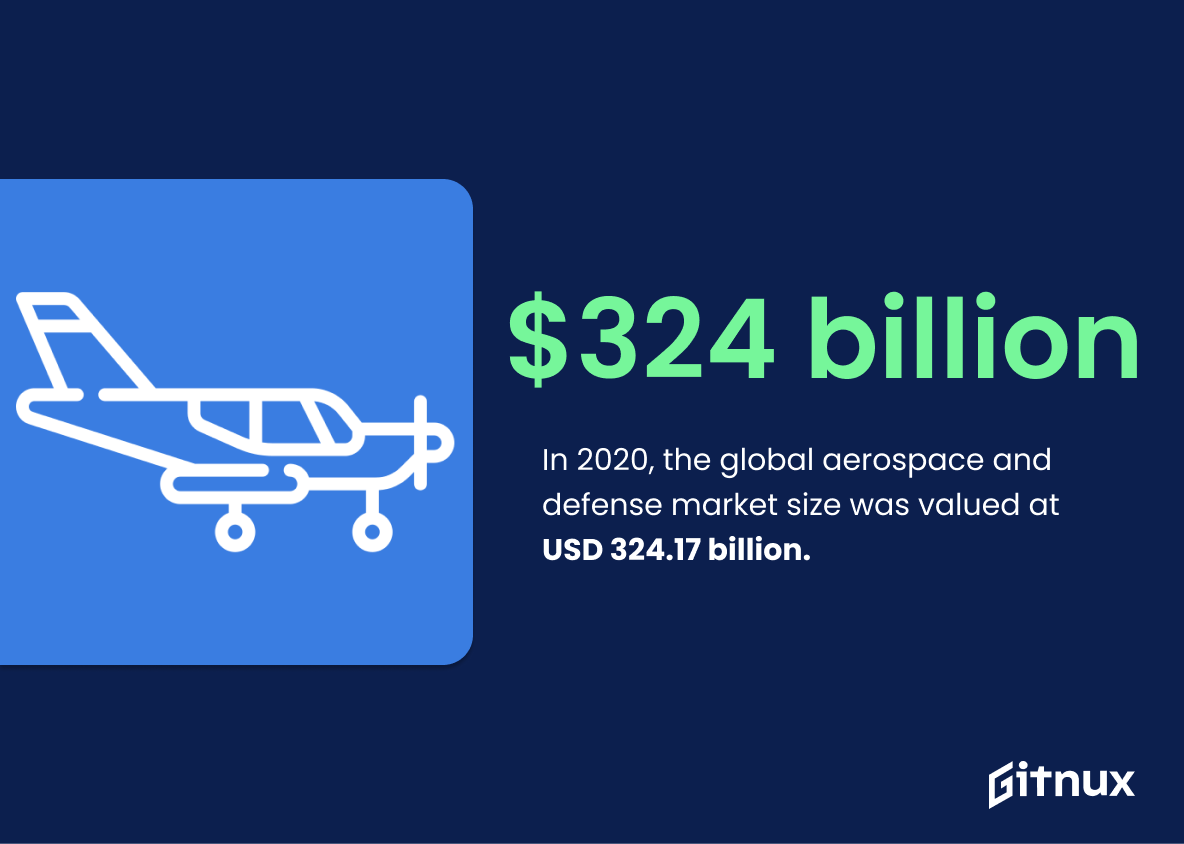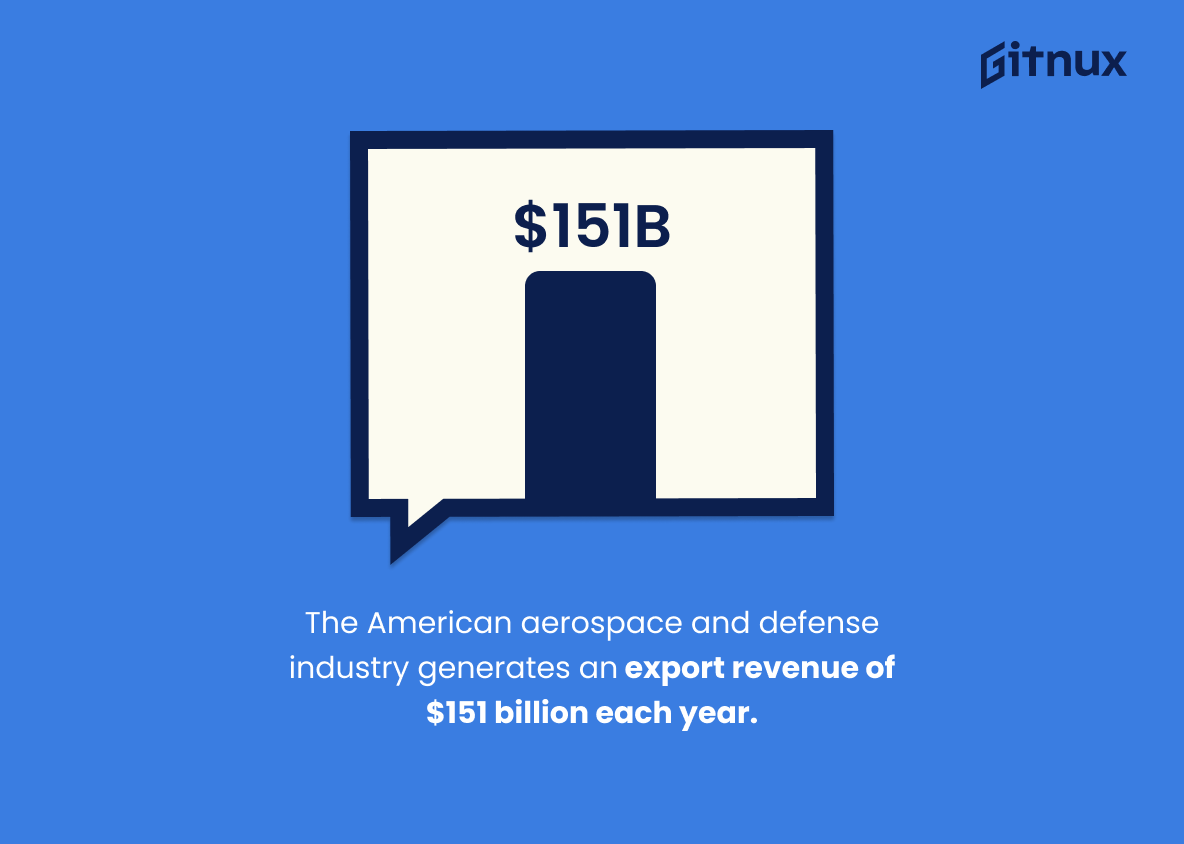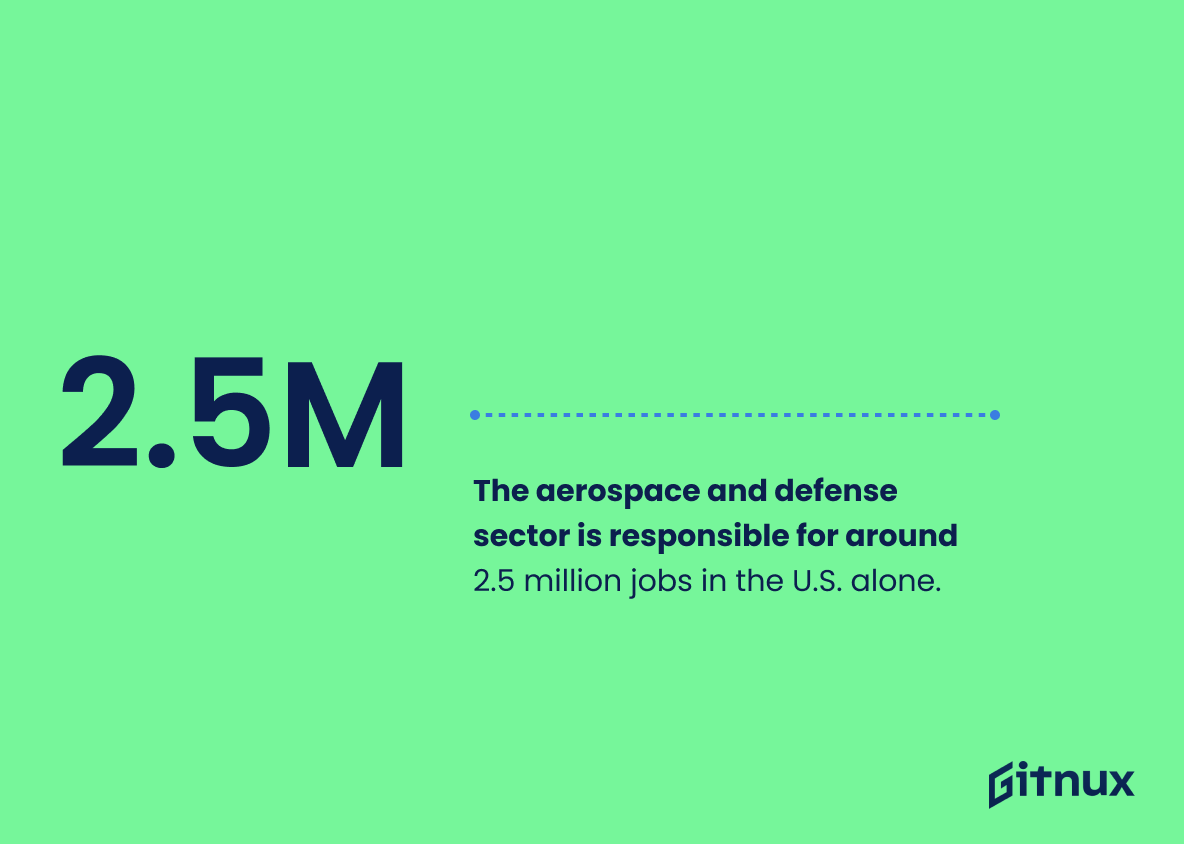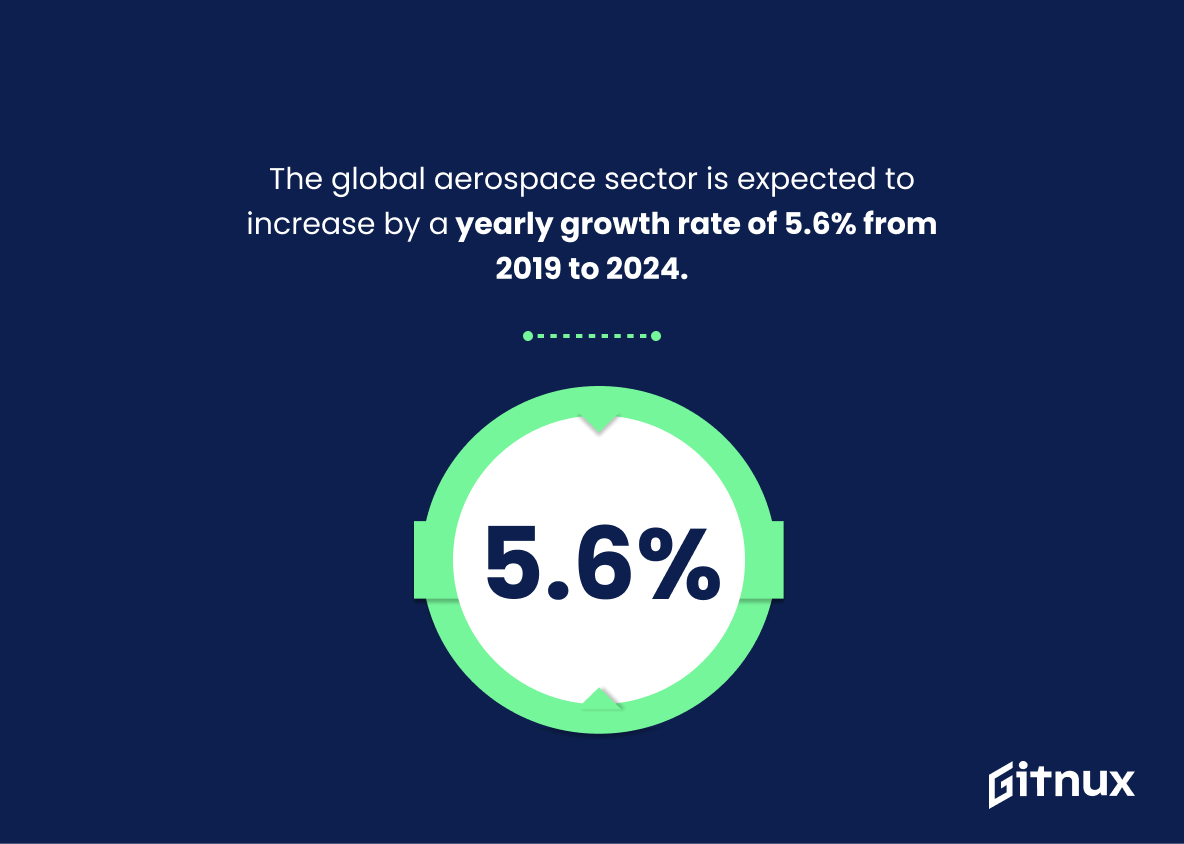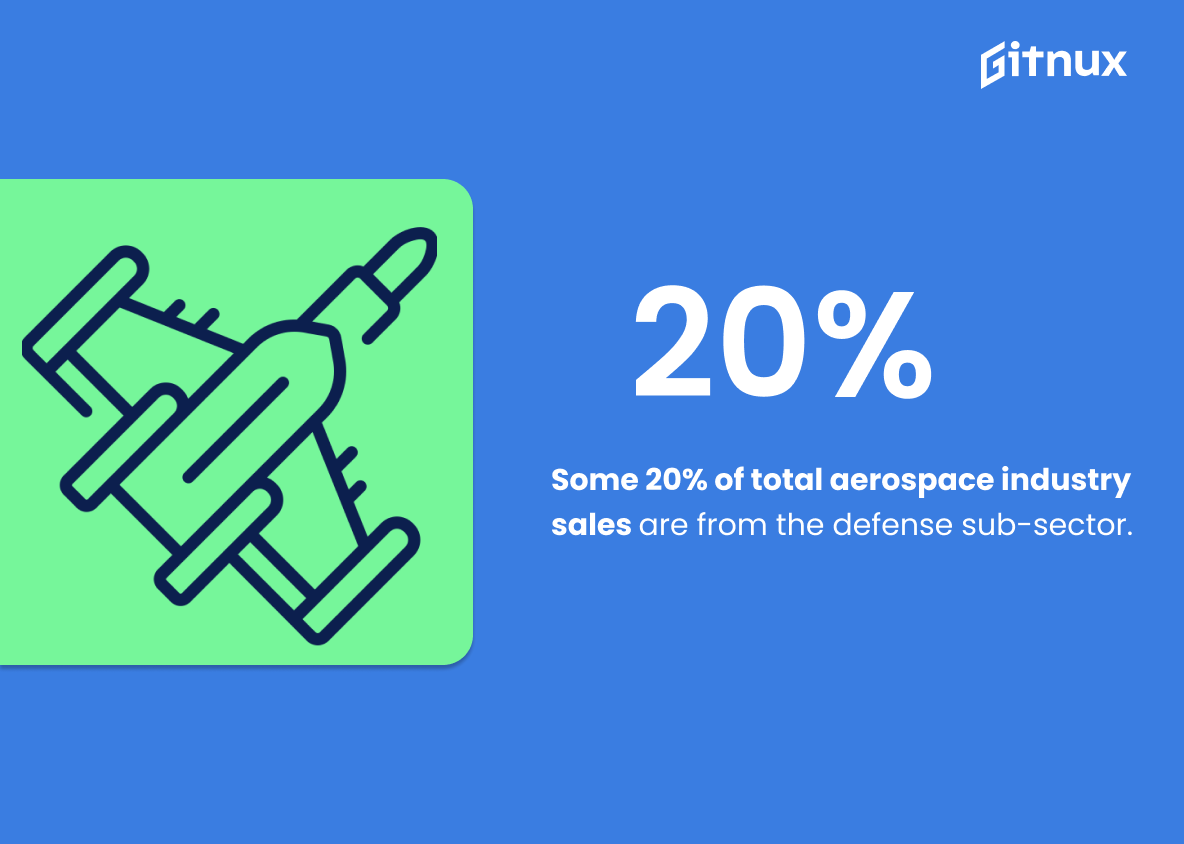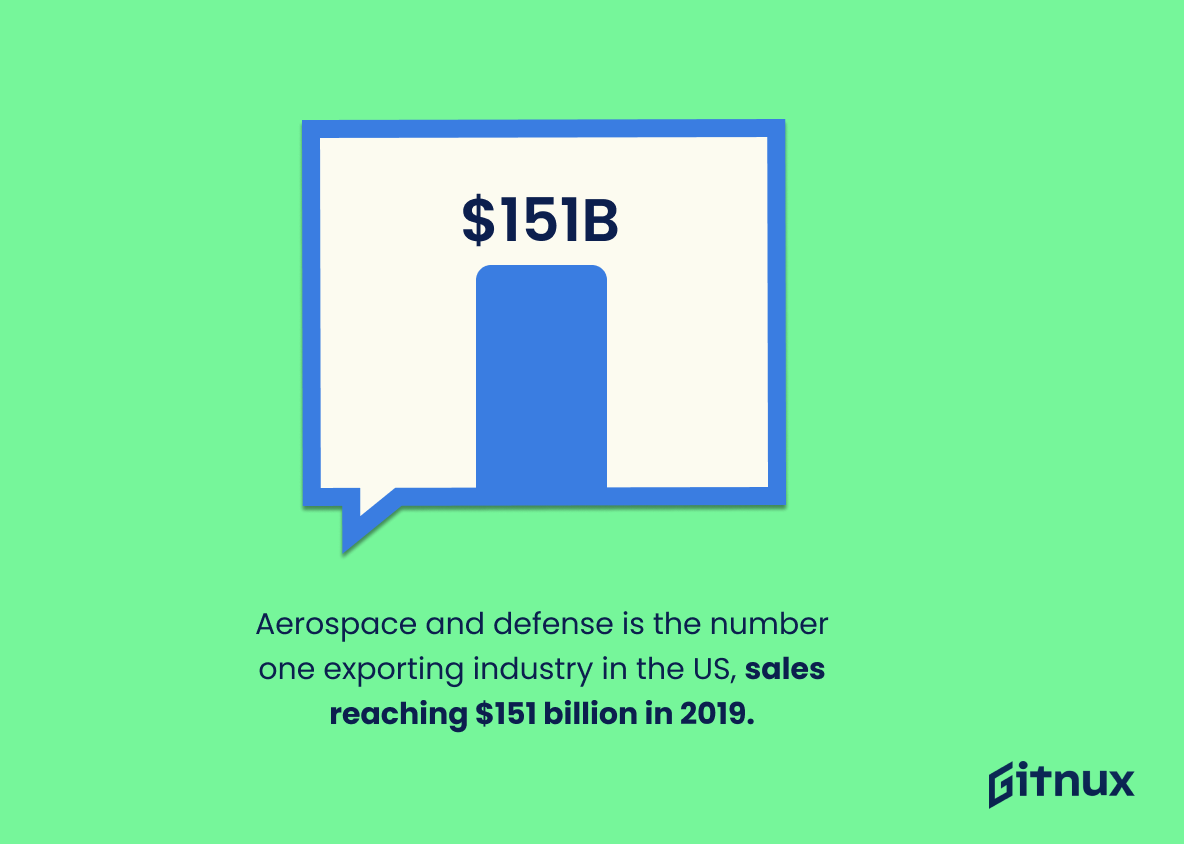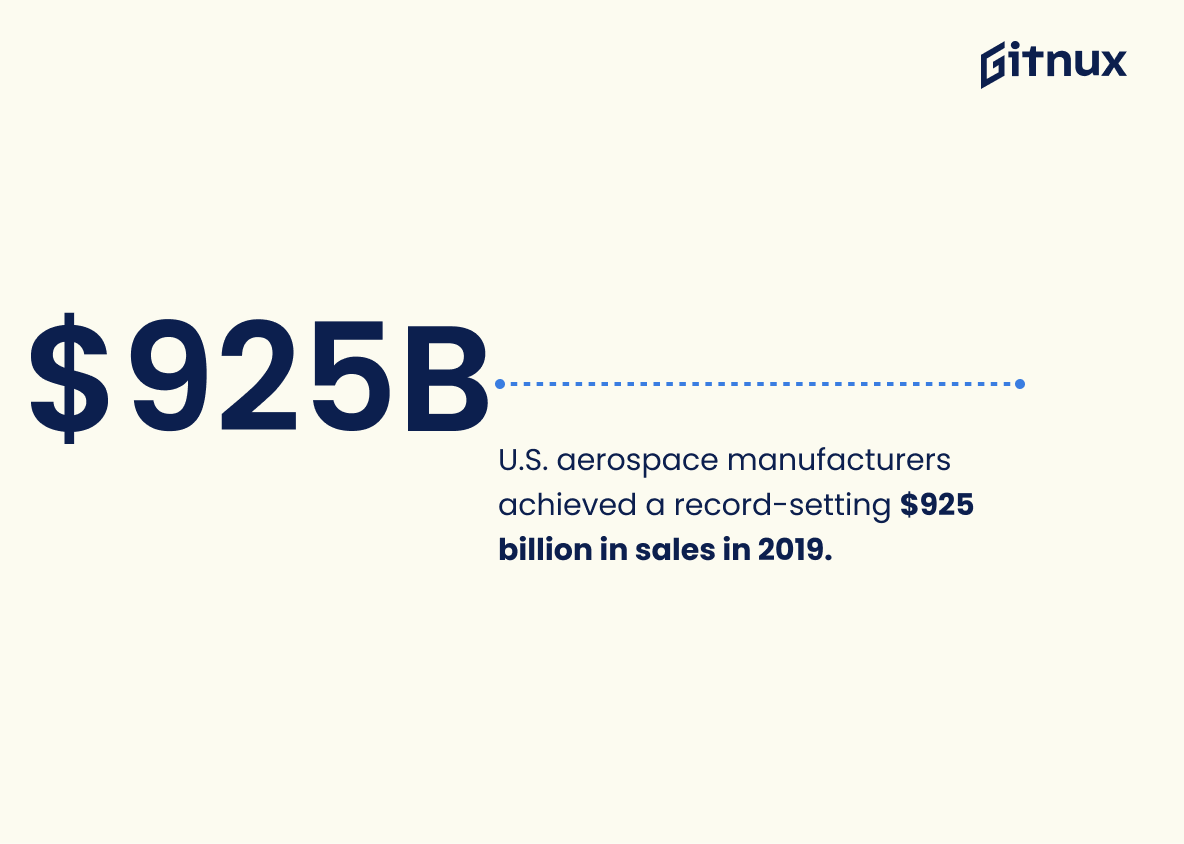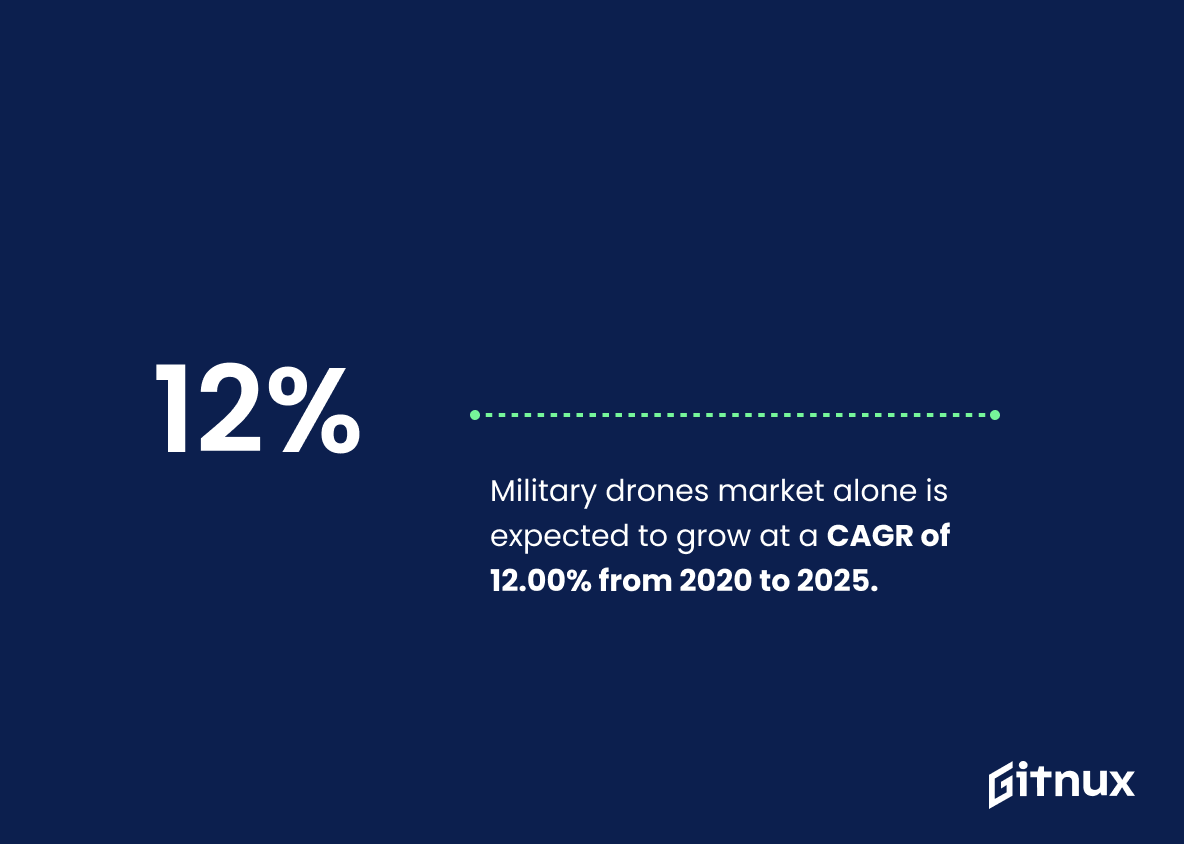Navigating the vast realms of the skies and beyond, the aerospace and defense industry plays a pivotal role in our world’s security, economy, and progress. It’s a fascinating sphere, intertwined with innovation, challenges and complex operations. From constructing advanced defense machinery to propelling space explorations, the aerospace and defense sector holds the power to shape nations and uplift civilizations.
This blog post takes an analytical dive into the latest statistics, dissecting growth patterns, industry trends, market performances and the driving forces of this complex, dynamic industry. Everyone from investors and industry professionals to the simply curious reader will find enriching insights and unexpected revelations that underpin the aerospace and defense world. So, let’s buckle up and prepare for a fact-fueled voyage into this thrilling industry’s statistical universe.
The Latest Aerospace And Defense Industry Statistics Unveiled
In 2020, the global aerospace and defense market size was valued at USD 324.17 billion.
Highlighted as a monumental figure of USD 324.17 billion, the 2020 global aerospace and defense market size paints a sweeping landscape of industry strength. Amid economic uncertainties and dynamic technological changes, this statistic stands as a testament to the industry’s resilience and continued growth. Serving as a solid foundation, this figure governs the tone of trends, developments, and future projections in the aerospace and defense industry.
In essence, it serves as a high-powered financial compass, guiding stakeholders through the thrill and turbulence of market analysis while keeping them informed about their investment conditions. Therefore, it’s a powerful ally in decoding the realm of aerospace and defense industry statistics.
The American aerospace and defense industry generates an export revenue of $151 billion each year.
Highlighting the monumental $151 billion annual export revenue generated by the American aerospace and defense industry provides tangible proof of the sector’s economic significance. This figure encapsulates its powerful role in shaping the country’s trade balance and serves as an indicator of America’s global influence in these strategic sectors.
It underscores the industry’s crucial contributions towards driving technological advancements, job creation, and national security. Furthermore, the mentioned statistic imparts a sense of scale to the discourse, enabling readers to gauge the industry’s relative standing among other sectors and understand their potential growth scope in this vast market landscape.
The aerospace and defense sector is responsible for around 2.5 million jobs in the U.S. alone.
In highlighting the enormity and all-inclusive influence of the aerospace and defense industry, we can’t ignore the staggering fact that around 2.5 million jobs in the U.S. are sustained by this sector. This alone paints a vivid picture of the industry’s foundational role in U.S. employment and by extension, its economy.
The symmetry of this industry with the nation’s labor market allows a unique lens to perceive the radiating effect on the lives of millions of people. Without a doubt, the ripples of its economic impact cascade far beyond the industry’s immediate boundaries into the realm of individual households, extending to the quality of life and vitality of the entire nation.
The U.S. aerospace and defense industry spent approximately $17.4 billion on RD&E (research, developmental and experimental) activities in 2019.
Shedding light on the immense figure of $17.4 billion spent by the U.S. aerospace and defense industry on RD&E in 2019 provides a testament to the industry’s commitment towards innovation, progress, and security. It underscores the sophisticated role of these industries in spearheading technological advancements, while integrating operational excellence and optimizing safety measures.
Furthermore, it conclusively signifies the aggressiveness of the market competition, reflecting the monetary magnitude organizations are willing to funnel into incessant refinement and groundbreaking research. This facet of extraordinary investment essentially illustrates the crucial role R&D plays in advancing the aerospace and defense industry.
The global commercial aerospace sector is expected to increase by a compound yearly growth rate of 5.6% from 2019 to 2024.
Positioning this exciting projection of a 5.6% compound annual growth rate for the global commercial aerospace sector from 2019 to 2024 as our fulcrum, we journey into an understanding of potential industry behavior in the landscape of Aerospace and Defense. It opens a panorama of possibilities; not only is there promise of accelerated growth for existing aerospace corporations, but it sets the stage for newcomers to join this upward trajectory.
It hints towards a kaleidoscope of innovation, efficiency enhancements, and technological breakthroughs. Furthermore, it signifies potential openings for job seekers and investment returns for stakeholders. Overall, it serves as an important crystal ball gazing into the future health and vitality of the Aerospace and Defense industry.
Some 20% of total aerospace industry sales are from the defense sub-sector.
Peering through the prism of a percentage, the assertion that a fifth, or 20%, of total aerospace industry sales originate from the defense sub-sector unveils a key aspect. It underscores the defense segment’s substantial contribution and underlines its significance as a robust pillar bolstering the aerospace industry’s overall financial performance which could shape strategic decisions and influence future trends.
Furthermore, this salient proportion highlights the potential for growth and investment in the defense sub-sector, shaping an understanding of its prominence within the aerospace ecosystem. Therefore, the pulse of our discourse on Aerospace And Defense Industry Statistics is invigorated by facts such as these.
Aerospace and defense is the number one exporting industry in the US, with export sales reaching $151 billion in 2019.
This eye-opening figure serves as the bedrock of our understanding, dramatically highlighting the massive role the aerospace and defense industry plays within the U.S economy. A mammoth $151 billion in export sales in 2019 undeniably heightens the industry’s significance, positioning it as the crowning champion of U.S exporting industries.
In the grand theater of aerospace and defense industry statistics, this colossal figure takes center stage, underscoring the sector’s robust health and pivotal contributions to the nation’s trade balance. Embracing and analyzing such data allows us to appreciate the industry’s vast reach, marking it as a key player not only domestically but on the global trade frontier.
U.S. aerospace manufacturers achieved a record-setting $925 billion in sales in 2019.
This whopping figure of $925 billion in sales by U.S. aerospace manufacturers that was clinched in 2019 paints a vivid picture of the robust health of the Aerospace and Defense Industry. Serving as a testament to the financial vitality and innovative powerhouses that these manufacturers are, this statistic underpins the scale of U.S.’s stride in the global aerospace arena.
Laying bare a narrative of growth and economic dynamism, it beckons a deeper exploration into the subsectors, trends, and strategies that have driven this record-setting performance. Undeniably, it peppers the blog post with a dose of formidable financial fact, reinforcing the perception of the Aerospace and Defense Industry as a bedrock of U.S. industrial and technological strength.
Aerospace and defense industry earnings growth is expected to outperform the S&P 500 index by 2022.
Delving into the layers of the given statistic, it creates a striking narrative for anyone interested in the Aerospace and Defense industry. Anticipating it to outpace the S&P 500 index by 2022 is a spark of optimism, signifying the industry’s potential for monetary gains and its robust stance in the competitive market. Within the framework of a blog about Aerospace and Defense Industry Statistics, this information embodies the power of numeric representation as it essentially forecasts the industry’s robust financial health.
This not only underscores the projected profitability for investors but also gives a glimpse of the overall industry dynamic. Readers, industry enthusiasts, investors, and even competitors can use this statistic as a guiding beacon, shaping their decisions and refining their strategies accordingly.
Defense products made up nearly 59 percent of the total shipment values in the U.S. aerospace industry in 2019.
The aforementioned statistic that defense products constituted approximately 59 percent of total shipment values in the U.S. aerospace industry in 2019 casts a spotlight on the industry’s vital pulse. It embroiders a patternscape, exhibiting the deep-rooted reliance of the aerospace industry on the defense sector. With the defense products taking up the lion’s share, it broadcasts the magnitude of the fiscal role they play in this field.
This number not only navigates us through the significant interdependence between the aerospace and defense industry but also prompts a clear understanding of the economic strength and strategic importance of the defense sector in 2019. Therefore, for anyone seeking to comprehend the dynamics of the Aerospace and Defense Industry, this statistic is indeed a high-level synopsis.
Government space budgets worldwide amounted to about $82.5 billion in 2019.
Highlighting the figure of $82.5 billion as the combined global government space budgets in 2019 is a powerful way to underscore the sheer scale and financial significance of the Aerospace and Defense industry worldwide. It offers a numeric testament to the industry’s economic weight, serving as a fiscal yardstick that measures the high priority various governments place on the sector.
This monetary indicator not only amplifies the colossal investment in space exploration and defense but also taps into the implications of industry trends, future growth, investment opportunities, and the potential economic impact. Therefore, it’s a pivotal number that paves the way for a deeper understanding of the industry’s breadth and potential for a blog post on Aerospace and Defense Industry Statistics.
Global defense spending increased by 3.6% in 2019, marking the largest growth in a decade.
Drawing our attention to the significant swell in worldwide defense spending by 3.6% in 2019, we notice a compelling trend impacting the Aerospace and Defense Industry. This robust growth, the most immense within a decade, casts a profound spotlight over every facet of the industry. This surge doesn’t just herald a rise in industry revenue, but could also potentially fuel research and development endeavors, scaling of operations, and strategic investments.
With defense industry stakeholders riding this high tide, it paves way for intriguing predictive trends for the future, shaping opportunities while broadening the horizons for businesses across the globe. This trend is something akin to a rising phoenix, providing powerful insights essential to understanding the Aerospace and Defense Industry’s dynamics and growth patterns.
Nearly 30% of the aerospace and defense industry revenue in the U.S. was derived from foreign markets in 2019.
Exploring the landscape of the Aerospace and Defense Industry, we cannot overlook a powerful insight drawn from the 2019 financial figures. An intriguing 30% of industry revenue forged its roots in the soils of foreign markets. This footprint of industry’s global reach offers a compelling narrative about the U.S. aerospace and defense industry’s impressive global impact and reliance on international business.
Such a percentage touches upon the symbiotic connection between the U.S. industry and its global counterparts, shedding light on the tremendous potential for growth outside domestic boundaries. Additionally, it underlines the strategic importance of global trade agreements and international relations in steering the direction of this sector. Moreover, the statistic holds a reflective mirror against the industry’s vulnerability to international market fluctuations, currency volatility, and global economic health.
Opulent with insights, this figure arms businesses, investors, policy-makers, and industry enthusiasts with a sharp perspective on the international panorama of the Aerospace and Defense Industry.
Military drones market alone is expected to grow to $26.8 billion by 2025, at a CAGR of 12.00% from 2020 to 2025.
In the grand theater of Aerospace and Defense Industry Statistics, the anticipated leap in the military drones market to $26.8 billion by 2025 presents an illustrious plot twist. Dancing to the tune of an impressive 12.00% CAGR from 2020 to 2025, this sector underscores a fascinating subplot in the broader narrative.
It certainly pulls back the curtain on thrilling advancements in technology, while simultaneously underlining the ever-increasing defense budget allocations globally, reflecting a clear shift towards more automated forms of defense. This key driver of growth in the industry orchestrates a marked influence on market trends and paves the way for innovative developments in drone technology, ultimately shaping the future of the aerospace and defense industry.
Conclusion
In sum, the Aerospace and Defense industry continues to exhibit signs of robust growth, shaped by various geopolitical, technological, and economic factors. With the ever-evolving geopolitical scenarios and technological advancements, the demand for more sophisticated defense systems and commercial aircraft is on an upward trend. Coupled with this is the emergence of industry trends like AI and digitalization that can potentially redefine the industry’s operational landscape.
Understanding these industry statistics not only offers a snapshot of the sector’s current position but provides critical foresight into its future path. As we forge ahead, the industry will no doubt continue to pivot and adjust in response to an increasingly interconnected and security-conscious global landscape. The evolution of the Aerospace and Defense industry demonstrates its sheer resilience and capacity for innovation, promising a future filled with endless opportunities.
References
0. – https://www.www.statista.com
1. – https://www.www.grandviewresearch.com
2. – https://www.www.aia-aerospace.org
3. – https://www.www.prnewswire.com
4. – https://www.www.marketsandmarkets.com
5. – https://www.aerospace.csis.org
6. – https://www.www.upi.com
7. – https://www.www.janes.com
8. – https://www.www.clearpath.org
